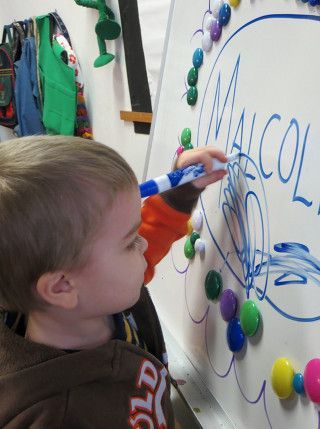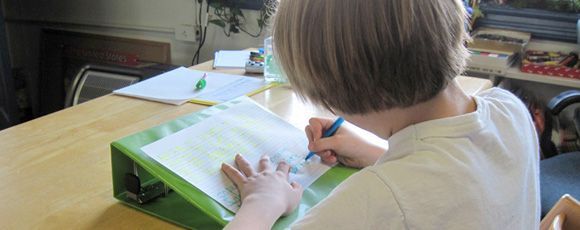

Visual-Motor and Writing Development
Young children develop hand skills which promote a mature dynamic grasp and efficient tool-use. Hand preference is established, and cooperative hand-use of both hands becomes more coordinated while drawing, coloring, and writing. Visual-motor skills such as cutting with scissors help to strengthen bilateral skills, as well as hand muscles, and isolates finger function when used correctly.
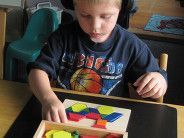
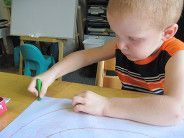
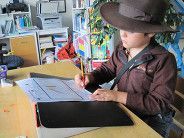
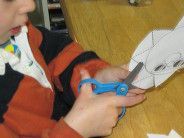
Perceptual Motor Development
Building with small manipulatives, sorting, matching, and copying patterns and designs helps to develop perceptual motor skills. The child learns to visually discriminate, analyze, and problem-solve, while learning simple to more complex relationships of forms in space.
Pre-Writing
Activities that include drawing, coloring, tracing, copying, building and imitating help children build a strong foundation for handwriting. By performing mazes and dot-to-dots they also learn about directionality, sequencing, and part-to-whole relationships which are elements of the writing process.
Handwriting
Some children learn to write effortlessly, while others may struggle holding the pencil, stabilizing the paper, and forming letters correctly. Writing a sentence, much less a paragraph is a painful process. These children may have muscle weakness or lower muscle tone and other negatively influencing factors such as difficulty attending or motor planning.
A child who is intelligent can still have difficulty with motor aspects of writing. These children are good at problem-solving, can compensate well, and may still develop poor habits in their writing process. They may not adequately express on paper what they know and could find writing a frustrating and laborious task.
One-on-one instruction and group writing classes are available to help children develop automaticity, fluency, and confidence in their writing ability. Winslow specializes in supporting children in their writing development and knows it continues to be an essential skill.
Call Winslow today
